Ear Piercing Pain: What To Expect, Healing Time, Home Remedies, & More
Ear Piercing Pain: What To Expect, Healing Time, Home Remedies, & More
Getting a new ear piercing is exciting. The curated ear has become a mainstay jewelry trend of the decade. Styling multiple ear piercings offer a creative yet understated way to elevate your look and showcase your personality – for work, school, weekends or a night out. However, especially if you’re receiving a first lobe or cartilage piercing, it’s understandable that the potential pain and healing process can seem intimidating. Proper preparation and after-care hygiene are essential to ensuring your ear piercing doesn’t get infected during the healing process. Doing your research on the expert piercers in your area will be pivotal. Working with a highly-recommended professional piercer is the best way to educate yourself on the correct placement options for your ear anatomy and the best methods for reducing piercing pain – from the time of your session to the final healing stages.
Expert Tip: Zensa Numbing Cream offers 5% lidocaine for maximum strength pain prevention and does not contain any vasoconstrictors, which briefly thin your skin texture and increase swelling at the piercing site. Our unique formula is ideal for piercings (for a pain-free piercing experience as shown in action here) because of its natural pH (designed for sensitive areas) and vitamin E concentration. Vitamin E offers anti-inflammatory benefits to soothe the inevitable swelling that results from getting an ear piercing or other piercings on the face or body. Apply a thick layer of the numbing cream to the piercing site, and leave it on for around 10-15 minutes. You should begin feeling the numbing sensation around 5 minutes after the product’s application.
Read on for your ultimate guide on what to expect when getting your ears pierced, from the least to most painful types of ear piercings (with their healing times), how long the pain lasts, and home remedies for piercing pain relief to the best after-care practices to reduce chances of infection, severe swelling or other painful side effects.
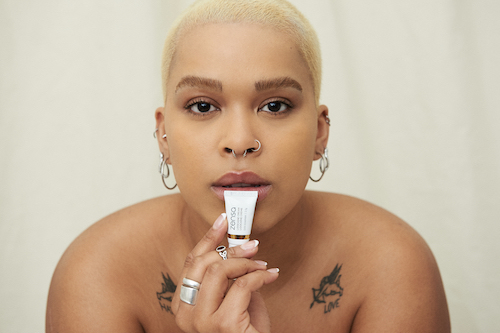
Different Types of Ear Piercings: Pain & Healing Times
The different types of ear piercings fall into two main categories: lobe piercings and cartilage piercings. A standard lobe piercing is widely considered the most common and least painful ear piercing available. It is the lowest maintenance option and has the shortest healing time. Standard lobe piercings rank at around a 2/10 on the pain scale and take 6-8 weeks to heal.
Transverse lobe piercings (done horizontally through the lobe instead of front to back) are a bit more painful than a standard lobe piercing but are the same or less painful than any of the least painful cartilage piercing types. They rank at around a 4/10 on the pain scale and with a 2-10 month healing time.
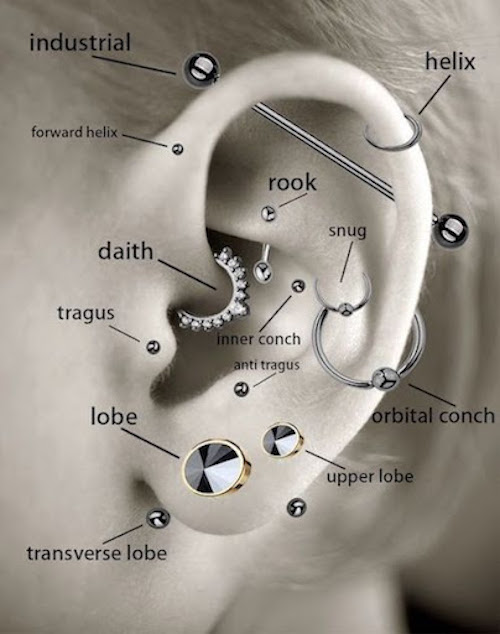
Credit: Fresh Trends/Pinterest
Orbital piercings – any two holes connected by a hoop (often done as a double lobe piercing) – will be slightly more painful than a standard lobe piercing if done on this fleshy area, but can be considerably more painful if placed on thicker cartilage tissue. An orbital piercing done on the lobe has a projected healing time of 8-10 weeks (2-3 months).
Nearly every cartilage ear piercing – including orbital placements as well as helix, forward helix, daith, flat, tragus, anti-tragus, snug, rook and industrial piercings – takes between 6-12 months to fully heal. For all types of ear piercings, expect higher pain levels and longer healing times if you decide to get multiple piercings done at once (e.g. a double or triple helix piercing). Helix piercings are generally considered to be the least painful cartilage ear piercing option – rating roughly at a 4/10 on the pain scale. The snug piercing is widely considered to be the most painful ear piercing type. However, some individuals might find the rook or industrial piercing to be the most painful ear piercing option. Pain is relative, meaning everyone’s pain tolerance is different.
See how different types of ear piercings stack up on the pain scale, along with their recovery time, with our blog posts on The Least To Most Painful Types of Ear Piercings, Ranked and Your Guide To Ear Piercing Healing Time & After-Care.
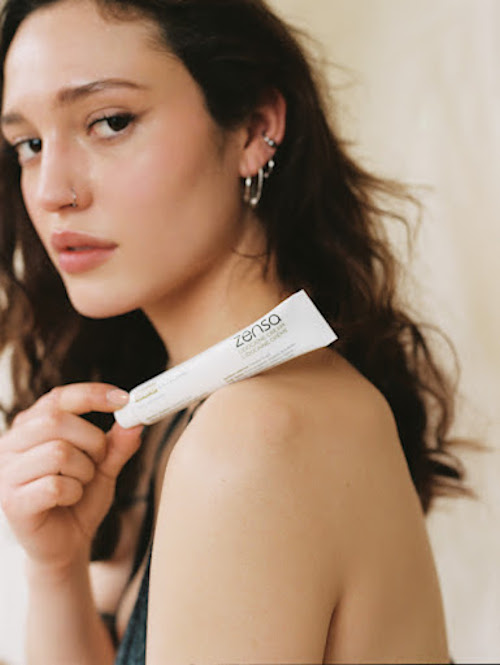
How To Prepare For A Less Painful Ear Piercing
Proper preparation is the best method to prevent ear-piercing pain. The most important first step is to research the top-rated or highly-recommended piercers in your local area. Speak with your chosen piercer. Ensure you feel comfortable speaking with them and that their expertise is the best fit for your needs. Have an appointment in the books, so you can have a well-timed plan in place before your ear piercing session. Especially if you’re riddled with anxiety, it’s important to nourish your body and calm your mind ahead of time.
Eat a satisfying meal around 4 hours before your appointment. Drink plenty of water within 24 hours of getting your ear piercing. Staying well-hydrated is essential to keep you from feeling dizzy and supports the healing process from the beginning. Don’t consume any alcohol within 24 hours before getting an ear piercing. Alcohol thins the blood and can lead to excessive bleeding. Limit caffeine and energy drinks to avoid skin dehydration, blood thinning and to keep your blood sugar levels steady.
Consider using a topical anaesthetic, like Zensa Numbing Cream, to minimize any ear-piercing pain. Zensa Numbing Cream offers 5% lidocaine for maximum strength pain prevention. Our vegan, cruelty-free formula is suitable for piercings because it does not contain any vasoconstrictors, which would briefly thin your skin texture and increase swelling. Apply a thick layer of Zensa Numbing Cream to the piercing site, and leave it on for around 10-15 minutes. You should begin to feel the numbing sensation around 5 minutes after the product’s application.
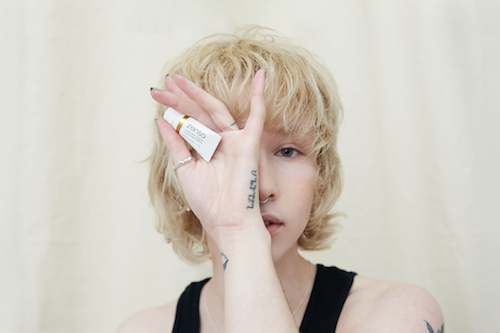
When your nerves kick in, remind yourself that ear piercings will not hurt too badly and most of the temporary pain will be gone after a few seconds. Remember to take deep breaths and relax. Show up to your appointment well-rested with freshly-washed skin. Make sure to get plenty of sleep the night before your ear piercing. Only confirm your appointment if you’re feeling well. Never get an ear piercing while sick. A low-functioning immune system can delay or negatively impact wound healing.
What To Expect When Getting An Ear Piercing
Your appointment will start with a consultation with your piercer to discuss your placement options and confirm whether they’re suitable for your ear anatomy (especially for placements like inner or outer conch and industrial piercings). Next, you can decide on the jewelry for your selected piercing (often a simple stud, hoop or barbell – depending on the piercing chosen). During your initial consultation, inform your piercer of any metal allergies or sensitivities (usually nickel or surgical steel) that could affect your earring options.
Everything in the vicinity will be clean and sterile. Your piercer will wipe down the chair, have washed hands (and/or wear disposable gloves), use pre-packaged sterilized needles and ensure the new jewelry is cleansed with iodine.
To prepare for the procedure, your piercer will disinfect the area of the skin being pierced with alcohol and iodine. Your piercer will use a purple pen to make exact marks on the piercing site. If desired, the numbing cream will be applied and allowed to sit for 10-15 until the lidocaine activates.

Almost all piercings must be done with a needle. A piercing gun can only be used for your ear lobes. Whenever given a choice, always have your holes pierced with a needle instead of a gun. Piercings done with a needle are more accurate, hygienic and generally safer than a piercing gun. The needles apply less force to minimize trauma to the skin, even if the process hurts a little more and takes longer than it would with a gun. The pressure of a piercing gun going through the skin also can delay wound-healing time and prolong the after-care process.
The piercing site might be sore, warm, slightly swollen and might bleed a little after the needle goes through the skin. Don’t worry: These after-effects are completely normal. Your piercer should put the jewelry in immediately and discuss proper after-care practices.
Best Ear Piercing After-Care Practices
During the healing process, clean the piercing 2-3 times daily with a saline solution, fragrance-free soap or another product recommended by your piercer. Pat the skin dry with a clean paper towel. Always wash your hands with soap and water before touching or cleaning your piercing.
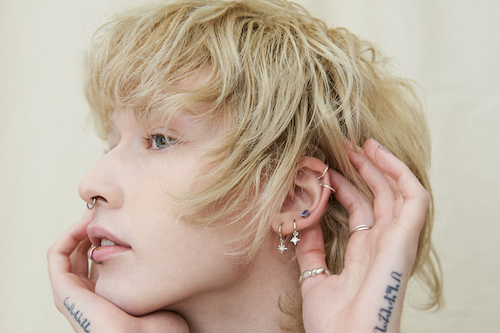
Lobe Piercing After-Care:
Repeat the cleaning routine above every day for around a month after getting your ear piercing. When cleaning your lobes, do a 360-degree twist with the earring(s) to ensure the area remains fresh and the holes stay open.
Cartilage Piercing After-Care:
Cartilage piercings take longer to heal and are more prone to side effects like irritation, infection, bumps (such as keloids, an overgrowth of scar tissue) and swelling than lobe piercings. So, you will need to take extra care during the after-care process when tending to a cartilage piercing. Repeat the cleaning routine above every day for around 3-6 months after getting your cartilage ear piercing. Do not turn any jewelry placed in a cartilage piercing. This practice can cause scarring or delay healing during the after-care process.
How Long Should Ear Piercing Pain Last?
Most ear piercing pain – including redness, swollen ear lobes or cartilage and soreness – typically lasts anywhere from a day or two, to around a week after your piercing session. Most side effects will subside within 3-5 days. If the pain lasts for over a week, it might be a sign that your new ear piercings are infected. Contact your piercer or a medical professional immediately if you suspect an ear piercing infection.
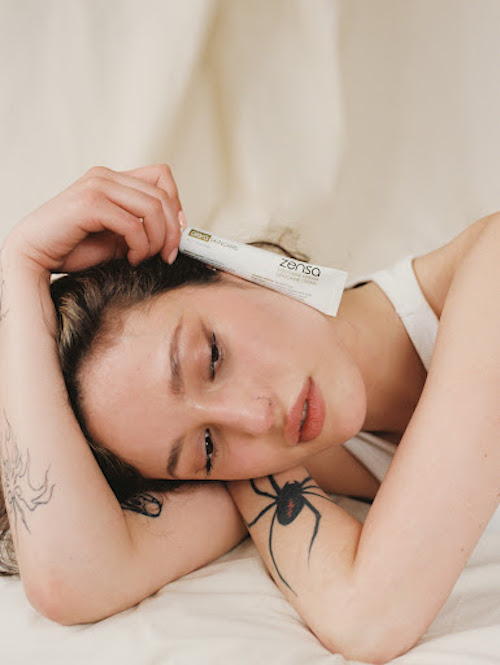
Ear Piercing Pain Relief
It’s normal for an ear piercing to be red, swollen and sore for up to a few days after your appointment. Remember not to sleep on your new ear piercings. This practice can increase or prolong tenderness around the piercing site. Some effective home remedies for ear piercing pain include:
- Chamomile Tea Bag Compress
- Ice/Cold Compress
- Sea Salt Solution (mix sea salt with warm water)
- Tea Tree Oil
- Almond Oil
- Jojoba Oil
- Coconut Oil
- Turmeric (combined with coconut oil for enhanced wound-healing benefits)
- Calendula Oil
- Shea Butter
Zensa Healing Cream contains medicinal-grade calendula oil with ingredients like shea butter to nourish the skin and relieve ear-piercing pain. Calendula oil offers anti-inflammatory, antibacterial, antiseptic, antiviral and collagen-boosting benefits to reduce inflammation, hydrate and soothe the skin, calm redness, ward off microbes and promote new tissue growth to support the wound healing process.

Signs of An Ear Piercing Infection
Normal side effects of an ear piercing include some redness, mild swelling, itchiness and irritation, soreness or tenderness, slight bleeding or discharge. However, if these symptoms cause more than slight discomfort for a few days, you might be displaying signs of an ear-piercing infection. The most common signs of an ear piercing infection are:
- Moderate to Severe Swelling
- Hot or Warm Sensation At The Piercing Site
- Redness
- Itchiness or Irritation
- Oozing Blood or White, Yellow or Green Pus
- Crusty Discharge
- Earring Gets Stuck In Your Ear
- Fever or Generally Feeling Unwell
Most ear piercing infections result from improper hygiene or neglecting your expert’s after-care instructions. Common causes of ear piercing infections include getting your ear piercing done with unsterilized tools, not cleaning your ear piercing daily with saline solution and water or touching your new piercing with unwashed hands. Allergic reactions to earrings made with certain metals (e.g. nickel or surgical steel) or wearing earrings with backings that are too tight also can cause an infection due to a metal sensitivity or restricted blood flow during the wound-healing process, respectively.
How To Treat An Ear Piercing Infection:
While unsightly and often painful, most ear piercing infections are relatively mild and can be treated at home with a low-maintenance routine that incorporates OTC treatments, everyday products and natural skincare ingredients.
With proper daily treatment, mild ear piercing infections should go away within 2 weeks. However, less frequently, an ear piercing infection will be more severe and require professional medical care. Contact your doctor right away if you see your earring sticking to your ear, feel feverish or see any redness, swelling or discharge spread up or down – beyond the piercing site – throughout the ear. Always seek professional care from your primary care doctor or urgent care if you’re concerned about ear piercing infection symptoms. A badly infected ear piercing can cause a fully-body infection called a systemic infection (when the skin swells and becomes filled with pus) if left untreated.

Home Remedies To Treat An Ear Piercing Infection:
- Sterile Saline Solution
- Sea Salt Solution (mix distilled water with sea salt)
- Mild, Fragrance-Free Soap (and water)
- OTC Antibiotic Ointment (Neosporin, Bacitracin, etc.)
- Almond Oil
- Shea Butter
- Tea Tree Oil
- Jojoba Oil
- Coconut Oil
- Calendula Oil (in products like Zensa Healing Cream)
Always seek out an expert recommendation, from your piecer or a medical professional, before using a product aside from a saline solution (or mild soap) and water to clean a new ear piercing or treat an infection from a fresh wound (a piercing that was done under 2 weeks ago). Once your skin undergoes this initial healing stage, your piercing will be less sensitive to these treatments and natural remedies that could otherwise dry out or irritate the area.
These plant oils are likely to be more widely recommended during the final ear piercing healing stages or to treat piercing bumps that continue to form after the formal wound-healing process.
Zensa Healing Cream is rich in antioxidants and supports your immune system, promotes healthy cellular turnover and reduces inflammation to decrease bumps or keloids from forming during the ear-piercing healing process or lessen any bumps formed in earlier wound-healing stages.
Ear Piercing Guides:
12 Top Ear Piercings & Your Guide To Each One
The Least To Most Painful Types of Ear Piercings, Ranked
Your Guide To Cartilage Ear Piercings: 10 Types To Know
Your Guide To The Ear Piercing Healing Time & After-Care
The Best Piercing Ideas For Your Face Shape
For more curated ear ideas, check out cute ear-piercing combinations HERE, HERE and HERE.
